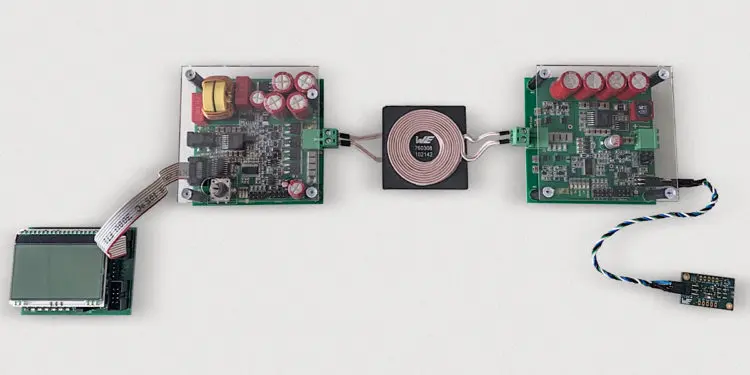Waldenburg (Germany), 16 July 2020 – Würth Elektronik has extended its “Wireless Power 200 W Extended Medium Power Solution” developer kit to include an innovative function
Although it was already possible to transfer data from the receiver device to the charging station, bidirectional data transfer can now be combined with the charging process.
During wireless power transmission, the device and charging station exchange data through amplitude and frequency modulation. Würth Elektronik provides the software for this newly developed wireless solution, including a checksum control – free of charge. A display board can also be ordered as an optional hardware extension of the developer kit.
Würth Elektronik currently offers the widest range of wireless power coils on the market – compliant both with the Qi standard and beyond.
“Fast connection without cables and the advantage of being able to build devices encapsulated and without plug connections. This is extremely interesting for developers in the industrial or medical technology sector – as it is too for the manufacturers of smartphones, lawn mower robots or electric scooters,” explains Cem Som, Division Manager Wireless Power Transfer at Würth Elektronik.
“With our developer kit we now offer options beyond the charging process and use inductive energy transfer as a communication channel.”
Small feedback with a big effect
Autonomous vehicles and drones, portable devices and tools can provide feedback via the charging connection: This can be measurement data or status messages from the battery or other components.
This is of crucial importance, for example with predictive/preventive maintenance. In turn, the device can receive commands or provide feedback to the user – in the simplest case for optimal alignment of the charging coils.
The kit—developed in cooperation with Infineon—has an I²C interface for sensors on the receiver board, and radio modules can be connected on the transmitter board. “Internet of Things” does not mean that every unit has to communicate via the Internet protocol.
By transferring data during charging, devices can become part of a cost-effective IoT solution without having to be permanently ‘online’ – we are excited to see what ideas we can bring to our customers with the kit,” says Cem Som.
The Wireless Power 200 W Developer Kit represents a 200 W charger, but can also serve as a template for higher power solutions.Würth Elektronik advises developers on selecting suitable components and provides free samples.
































